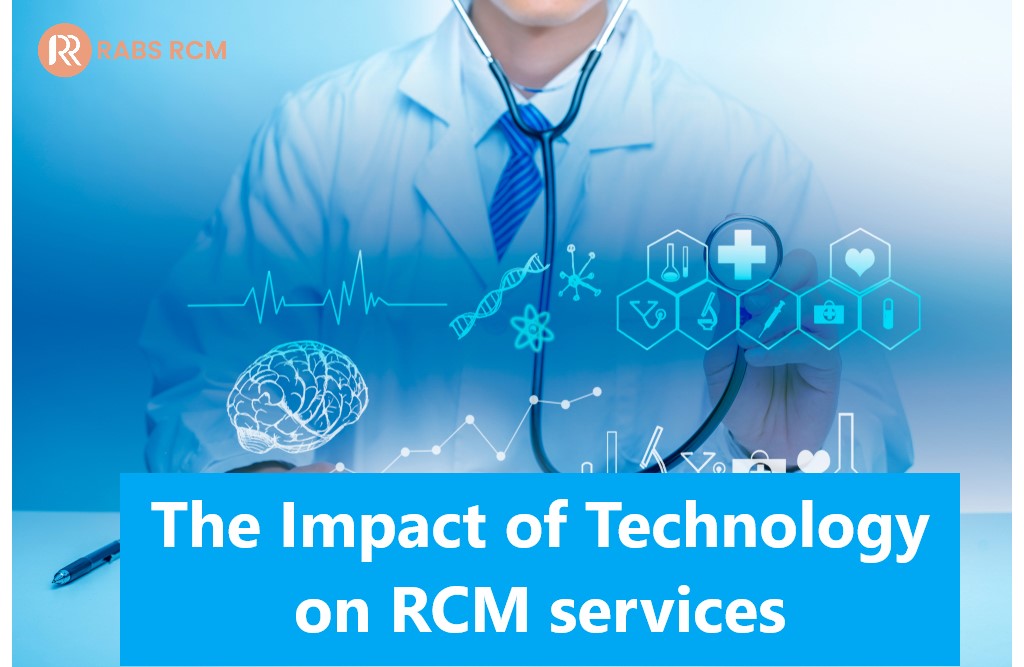Copyright © 2022 Rabs-RCM. All Rights Reserved.

The Impact of Technology on RCM Services
We are living in the digital era. It’s nearly impossible to stroll down a city street without encountering someone engrossed in their smartphone. Hospitals and healthcare organizations are depending on technology to improve revenue cycle management components, which should result in increased profitability. Revenue cycle management (RCM) is the method used by healthcare organizations to pay bills. It will be used by healthcare organizations to manage administrative tasks such as claims processing, revenue generation, and payment acceptance. Increasing profitability is always the objective, and several factors should be considered when analyzing an organization’s financial strength. Here are some examples of how technology has impacted and improved revenue cycle management.
1. Less Chance For Human Error
Human mistake is, unfortunately, unavoidable at times. It frequently happens when collecting patient information because there is so much of it. The consequences of their mistakes can eventually result in a loss of profits for a company. However, newer technologies reduce the possibility of errors by streamlining the patient information collection procedure. It also saves time and generally results in better overall results. Management software is used by hospitals and healthcare organizations to keep track of all patient details. This information contains the patient’s medical history, address, billing information, and insurance information. When information is changed (for example, a new home address), the system will immediately update to reflect the changes.
2. More Automation
Many aspects of revenue cycle management are repetitive and consume precious time during the day. Because some RCM processes are unavoidable, technology is frequently used to handle them. To begin, organizing can consume a significant amount of time during the day. Many employees are required to spend a significant amount of time on the phone each day for scheduling reasons. Many organizations are now allowing patients to schedule appointments online through patient portals. Another illustration would be claim submissions. Claims can now be filed automatically for review in newer systems. We also have software that monitors each patient’s account, and certain tasks can be pre-programmed.
3. Introduce alternative forms of payment
Technology enables new ways to offer patients alternative payment methods, which can eventually reduce denials and create clean claims. Modern Medicine Network advised patients to use technology that allows them to pay by electronic bank transfer, health savings account, credit card, cash, or cheque, as well as in person, online, or over the phone. Introducing numerous payment methods can encourage patients to settle their balances on time.
4. Improved Staff Efficiency
It improves staff efficiency through automation by allowing them to concentrate on other tasks rather than manual data entry. Automation also reduces administrative burdens across an organization’s departments, making it simpler for employees to collaborate on projects or initiatives. This boosts morale and leads to even more incredible innovation in their various roles.
5. Improved Patient Experience
RCM technology improves payment collection efficiency, increasing an organization’s total revenue. It can, for example, assist organizations in reducing claim denials, correctly tracking and managing accounts receivable, and creating more accurate coding to ensure appropriate reimbursement. Healthcare organizations have seen a significant improvement in their ability to expedite collections while also gaining insight into previously hidden areas of their business operations by utilizing RCM technology.

- Our seamless and streamlined efforts, experience, as well as commitment to our clients, all come together to provide both you and your patients with a remarkable experience to remember.
Contact Us
- 2612 62nd St NW Rochester MN 55901 (USA)
- (507) 262-4566
- info@rabs-rcm.com

